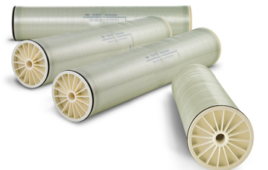A
team of British and Australian scientists has discovered how carbon is
drawn down from the surface of the Southern Ocean to the deep waters
beneath.
The
Southern Ocean is an important carbon sink in the world—around 40% of
the annual global CO2 emissions absorbed by the world’s oceans enter
through this region.
Reporting this week in the journal Nature Geoscience,
scientists from British Antarctic Survey (BAS) and the CSIRO, reveal
that rather than carbon being absorbed uniformly into the deep ocean in
vast areas, it is drawn down and locked away from the atmosphere by
plunging currents a thousand kilometers wide.
Winds,
currents and massive whirlpools that carry warm and cold water around
the ocean—known as eddies—create localized pathways or funnels for
carbon to be stored.
Dr Jean-Baptiste Sallée, formerly of CSIRO and now with the British Antarctic Survey, Cambridge?.
Lead
author, Dr Jean-Baptiste Sallée from British Antarctic Survey says,
“The Southern Ocean is a large window by which the atmosphere connects
to the interior of the ocean below. Until now we didn’t know exactly the
physical processes of how carbon ends up being stored deep in the
ocean. It’s the combination of winds, currents and eddies that create
these carbon-capturing pathways drawing waters down into the deep ocean
from the ocean surface.”
“Now
that we have an improved understanding of the mechanisms for carbon
draw-down we are better placed to understand the effects of changing
climate and future carbon absorption by the ocean.”
CSIRO
co-author, Dr. Richard Matear says the rate-limiting step in the
anthropogenic carbon uptake by the ocean is the physical transport from
the surface into the ocean interior.
“Our
study identifies these pathways for the first time and this matches
well with observationally–derived estimates of carbon storage in the
ocean interior,” Matear says.
Dr Richard Matear, Research Scientist, CSIRO Marine and Atmospheric Research.
Due
to the size and remote location of the Southern Ocean, scientists have
only recently been able to explore the workings of the ocean with the
help of small robotic probes—known as Argo floats. In 2002, 80 floats
were deployed in the Southern Ocean to collect information on the
temperature and salinity. This unique set of observations spanning 10
years has enabled scientists to investigate this remote region of the
world for the first time.
The
floats are just over a meter in length and dive to depths of 2 km.
Today, there are over 3,000 floats in the oceans worldwide providing
detailed information used in oceanic climate models.
The
team also analyzed temperature, salinity and pressure data collected
from ship-based observations since the 1990s. The instrument used for
this is called a CTD profiler which is a cluster of sensors taking
measurements as it’s lowered deep down into the ocean to depths of more
than 7 km.
The
work was supported through the Wealth from Oceans and Australian
Climate Change Science Programs, and the Australian Government’s
Cooperative Research Centre program.
Localized subduction of anthropogenic carbon dioxide in the Southern Hemisphere oceans
Source: CSIRO




